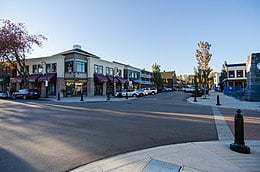Delta, British Columbia

Delta is a city in British Columbia, and forms part of the Lower Mainland and Greater Vancouver. Located south of Richmond, it is bordered by the Fraser River to the north, the United States (Point Roberts, Washington) to the south and the city of Surrey to the east. Delta is composed of three distinct communities: Ladner, Tsawwassen, and North Delta.
Prior to European settlement, Delta’s flatlands and coastal shores were inhabited by the Tsawwassen First Nation of the Coast Salish. The land was first sighted by Europeans in 1791, when Spanish explorer Lieutenant Francisco de Eliza mistook the area for an island and named it “Isla de Cepeda”. The first European settler in Delta was James Kennedy who pre-empted 135 acres in what later became Annieville in February 1860. Thomas and William Ladner, began farming the area named after them in 1868. Farming and fishing helped the community grow quickly over the next few decades. In 1879, the area was incorporated as a municipality, named “the Corporation of Delta”, and the village of Ladner was made as its administrative centre.
Due to its geography, Delta was a relatively isolated community. The completion of the George Massey Tunnel in 1959 linking Ladner to Richmond and Vancouver along with the opening, in 1960, of the Tsawwassen Ferry Terminal and the Highway 99 being rerouted from the King George Highway in Surrey in 1962 to a new route through Delta, ended Delta’s isolation and resulted in a massive 400% population growth over the next 20 years. The 1986 completion of the Alex Fraser Bridge connecting North Delta to New Westminster and Vancouver also helped Delta’s growth.
On 22 September 2017, at the request of Delta’s council, the Government of British Columbia changed the name and classification of the Corporation of Delta to the City of Delta.[1]
